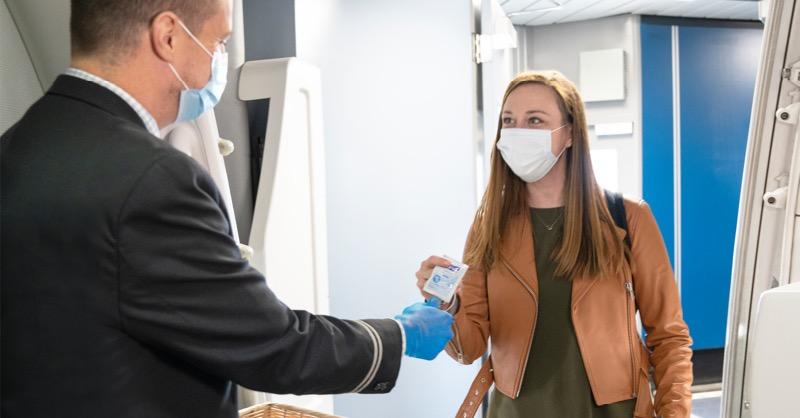U.S. Carriers Promote Safety Protocols To Win Back Passengers

JetBlue Airways and United Airlines both unveiled stepped-up safety protocols on May 20, as carriers scramble to persuade wary travelers to return to the skies amid the COVID-19 pandemic.
New York-based JetBlue announced it will extend social-distancing measures in the cabin through the July 4 holiday, part of its “safety from the ground-up” initiative. To create more space between passengers, middle seats have been blocked off on Airbus A320s, while aisle seats have been blocked on its Embraer E190s.
The policy comes as JetBlue is set to roll out temperature monitoring for its crewmembers and electrostatic aircraft fogging in June. The enhanced social distancing will remain intact until at least July 6.
“We’re known for generous legroom and space, and now more than ever, those choosing to travel want as much space as possible,” JetBlue president Joanna Geraghty said. “We are pleased to extend our efforts to keep seats free and help everyone onboard spread out.”
United Airlines introduced its CleanPlus partnership with Clorox, which will see it roll out the disinfectant-maker’s electrostatic sprayers to clean out aircraft before each flight starting in June.
Chicago-based United is taking a variety of steps to enhance safety, deploying sneeze guards at check-in counters, serving customers “all in one” snack and supply bags at the beginning of each flight and allowing them to book alternative trips when a flight is expected to operate at over 70% capacity.
“We recognize that COVID-19 has brought cleanliness and hygiene standards to the front of customers’ minds when making travel decisions, and we’re not leaving a single stone unturned in our pursuit to better protect our customers and employees,” United CEO Scott Kirby said in a video message.
The initiatives come as airlines are growing increasingly desperate to convince passengers that flying is safe as the global pandemic stretches on. Airline for America (A4A), the industry trade group, on May 20 announced a new public awareness campaign dubbed “Fly Healthy. Fly Smart,” which showcases the stepped-up cleaning and procedural changes underway across the industry.
Airlines are hopeful that the worst of the crisis is behind them, with multiple carriers reporting returns to positive net bookings amid a modest bump in demand for leisure travel, particularly to beach areas like Florida and the West Coast. Even with stubbornly low load factors, however, airline executives are grappling with how to incorporate social distancing in the cabin while remaining viable businesses during the course of the recovery.
Highlighting that uncertainty, National Air Carrier Association (NACA) president and CEO George Novak, whose trade group represents 17 smaller carriers and ULCCs, told House Transportation Committee chairman Peter DeFazio (D-Oregon) in a May 19 letter that expecting carriers to cap narrowbody load factors at two-thirds—an idea championed by the congressman—is not a workable concept for any duration of time.
“Imposing arbitrary aircraft capacity restrictions without a significant increase in financial assistance from the federal government will provide limited, if any, safety benefits, force airlines to increase fares to compensate for a limited supply of seats, and likely result in several airline bankruptcies and the loss of tens of thousands of jobs—a scenario none of us wants to see,” Novak wrote.




